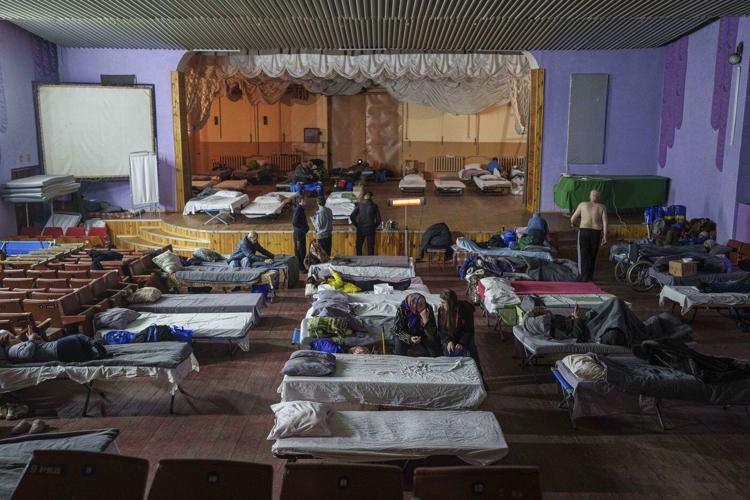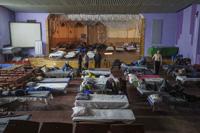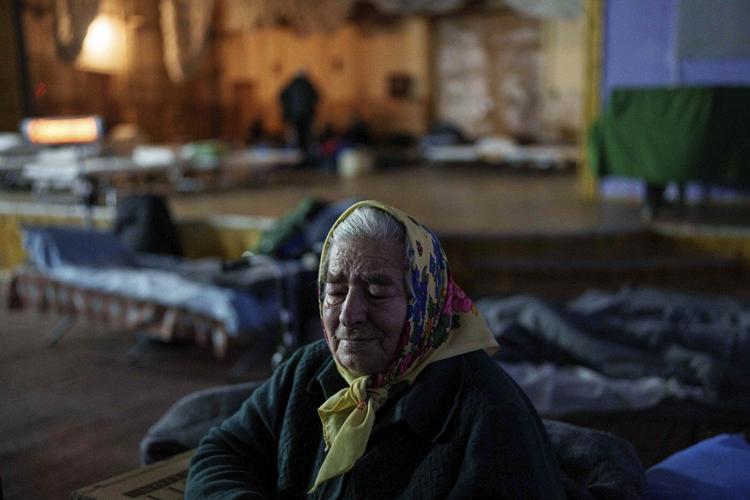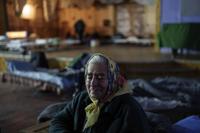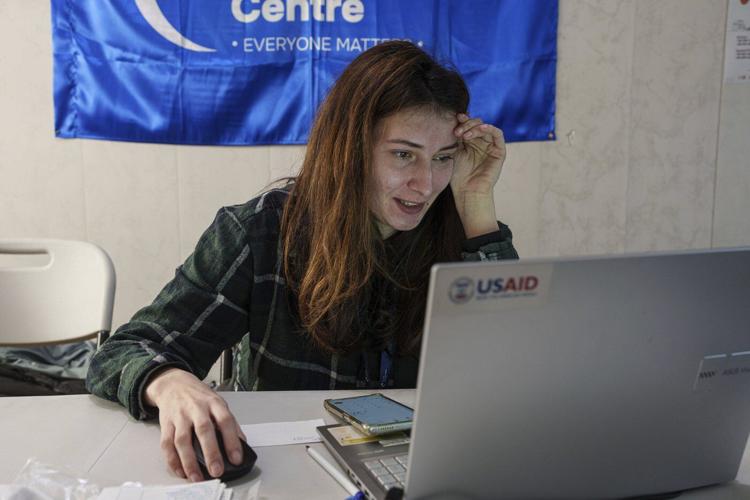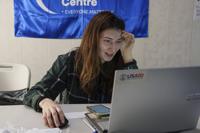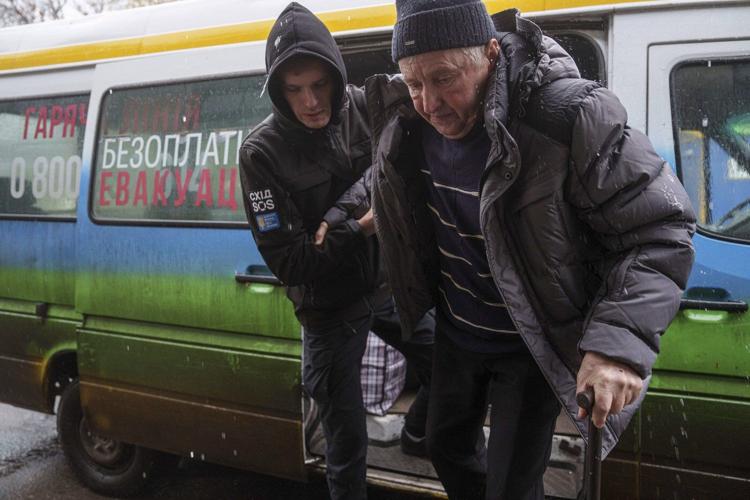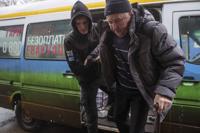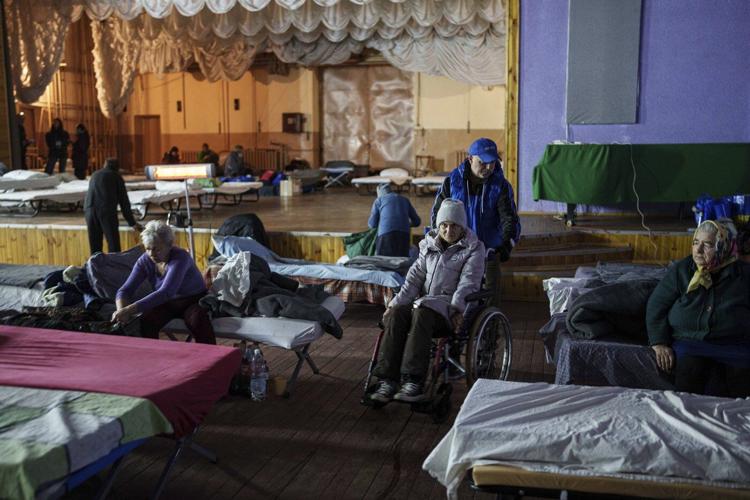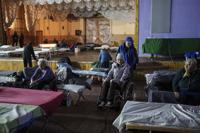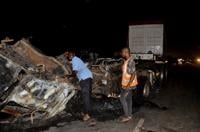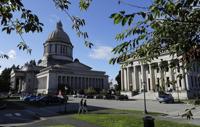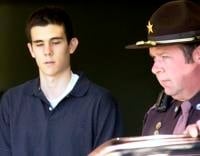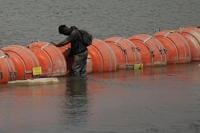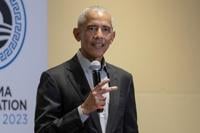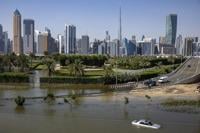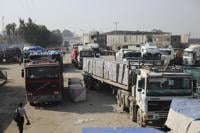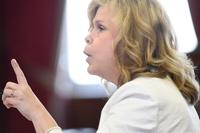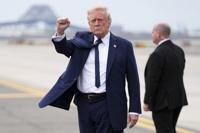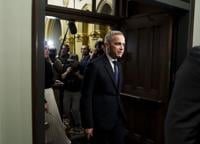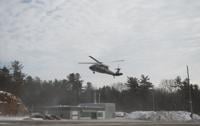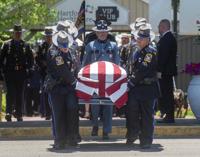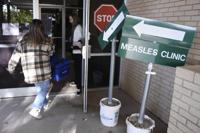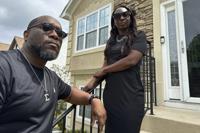PAVLOHRAD, Ukraine (AP) — In what used to be the concert hall in this town in eastern Ukraine, cots are arranged on stage. Instead of music, the room is filled with the muffled sobs of local people driven from their homes by fighting in the country’s almost three-year war with Russia.
The Russian army’s recent advances have in the area. The Pavlohrad concert hall was requisitioned as a temporary center for local civilians fleeing the relentless Russian bombardment.
“It’s good here. There’s food, warmth, and a place to wash,” said 83-year-old Kateryna Odraha, who lived through the Nazi German occupation of her village during World War II.
That refuge may now be in peril.
The shelter costs the equivalent of $7,000 a month to run, and 60% of that was being covered by U.S. funds sent to help Ukraine.
President Donald Trump’s decision last week to the humanitarian aid that the United States provides to countries overseas was felt in places far from Washington, including here, a few kilometers from the front line in eastern Ukraine.
Trump’s decision immediately halted thousands of U.S.-funded humanitarian, development and security programs. The consequences have .
“This news was abrupt and unexpected,” said Illia Novikov, the coordinator of the Pavlohrad transit center, which is run by the charity organization Relief Coordination Center. “At this moment, we have no idea what the future holds.”
The U.S. funding covered fuel for evacuation vehicles, salaries for aid workers, legal and psychological support, and tickets to help evacuees reach safer locations, he said.
Usually about 60 people pass through the shelter each day, but when the Russian bombardment worsens, that can climb to more than 200, according to Novikov.
Many people heading here have spent months living in their basement without electricity, running water or enough food.
Vasyl Odraha, 58, remained in his local village for months, even as artillery fire and Russian guided bomb strikes became more frequent as the war moved closer.
He said he initially believed that Trump would stop the war within 24 hours of taking office, during his election campaign.
“We pinned our hopes on Trump’s election,” he said, sitting on a cot beside his 83-year-old mother.
When the fighting didn’t stop, and the front line moved to within less than 3 kilometers (2 miles) of where they lived, they fled at dawn.
“If we hadn’t left, we would have died that very night,” said Kateryna Odraha.
Across Ukraine, many other sectors are reeling from the aid freeze, which places additional strain on Ukraine’s stretched wartime finances.
Energy projects, veteran support programs, psychological helplines, cybersecurity, health care, independent media, and even border infrastructure projects have been affected. The aid was intended to help cushion the war’s impact.
Ukrainian President his government expects $300-400 million in aid to be cut. Most of that was for the energy sector that has been targeted by Russia.
Ukraine hopes to make up the shortfall from European sources of aid or internal ones, Zelenskyy said.
The World Health Organization, a U.N. agency which Trump , launched an emergency appeal Tuesday to raise $110 million for its humanitarian response in Ukraine where it said almost 13 million people are “in dire need” of assistance.
“The humanitarian crisis in Ukraine has reached a scale of undeniable severity,” the WHO said in a statement.
In the latest devastating Russian attack on a civilian area, authorities said a ballistic missile smashed into an administrative building in downtown Izium, a city in Ukraine's northeastern Kharkiv region, killing five people and injuring 50 others, including three children.
U.S. military aid has not been frozen, according to Zelenskyy, but Ukraine has received only about 42% of the money approved by Congress.
There is no clear sign the war might be close to ending, and that means Ukrainian civilians will need more help.
“Evacuations will continue for a long time,” Novikov, the transit center’s coordinator, said. “There may be new front lines, new affected communities, so we must be prepared to keep providing assistance.”
___
Associated Press journalists Samya Kullab, Susie Blann and Illia Novikov in Kyiv contributed.
___
Follow AP’s coverage of the war in Ukraine at

